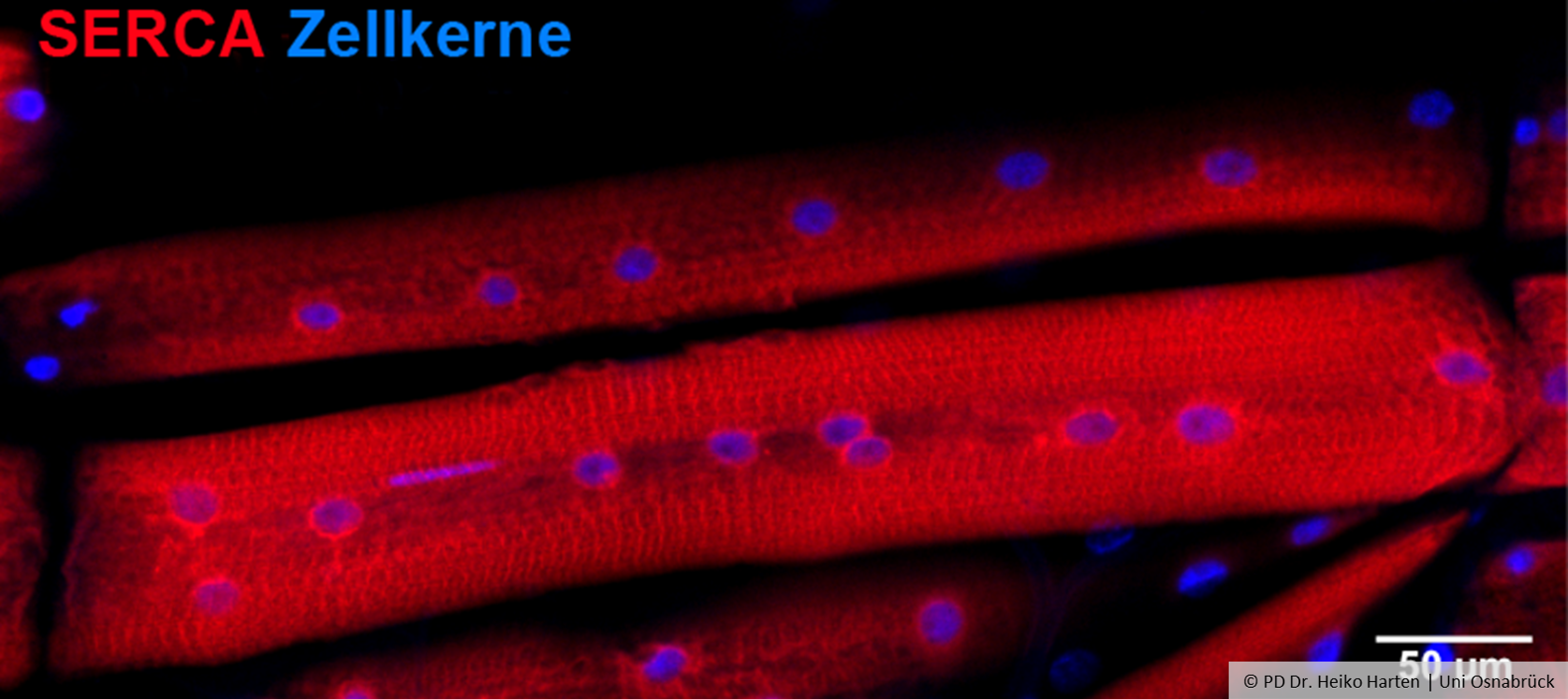Main content
Top content

A muscle fibre of the fruit fly is shown. The characteristic localisation of the SERCA enzyme (red) along the individual sarcomeres enables controlled and rapid successive contractions. The cell nuclei of the multinucleated muscle fibre are coloured blue.
Finding the right rhythm – Osnabrück developmental biologists receive DFG funding for heart research
12.09.2024
How does the heart adjust its rhythm to changing physical demands? A team led by PD Dr Heiko Harten will be investigating this question in more detail in future as part of a DFG-funded project. In particular, the researchers want to investigate whether a molecular mechanism that they have previously discovered in the fruit fly Drosophila melanogaster also plays a decisive role in the human heart.
The human heart pumps around 8,000 litres of blood through the vascular system every day. To achieve this, the concentration of calcium ions within the heart muscle cells must be precisely regulated in humans and most animals. The calcium pump ‘SERCA’ has long been recognised as a decisive factor in this regulation. Its main task is to transport calcium ions from the cytosol of the muscles. This process initiates the relaxation phase of the muscles, i.e. relaxation. A regular heartbeat can only take place if the calcium pump is working properly.
In earlier experiments, biologists from the Zoology/ Developmental Biology group were able to describe a previously unknown mechanism that the heart cells use to regulate the activity of the calcium pump. The mechanism apparently ensures that the heart can adjust its frequency under changing physiological conditions without losing its rhythmicity. This newly identified level of regulation is based on the activity of the enzyme ‘neprilysin 4’. Until now, neprilysins have not been associated with diseases of the heart or with the regulation of the calcium pump.
While the previous data was mainly collected in the fruit fly Drosophila melanogaster, one of the world's most frequently used model systems for translational research projects at the interface between biology and medicine, the planned experiments will now be extended to human cell cultures and heart tissue preparations. "We have already been able to show in preliminary experiments that the relevant factors found in the heart of the fruit fly also exist in the human heart and that their distribution within the heart muscle cells is almost identical to the corresponding distribution in the fly heart. This indicates comparable functionality," says study leader PD Dr. Heiko Harten. "If the mechanism discovered in the fruit fly can actually be transferred to the human heart, our findings could provide an important basis for the development of novel therapies for the treatment of human heart disease."
Future research into these issues is now being funded by the German Research Foundation (DFG) with a doctoral position and material resources (DFG HA 6421/4-1).
Further information
PD Dr. Heiko Harten, Osnabrück University
School of Biology / Chemistry
Phone: +49 541 969 2858







